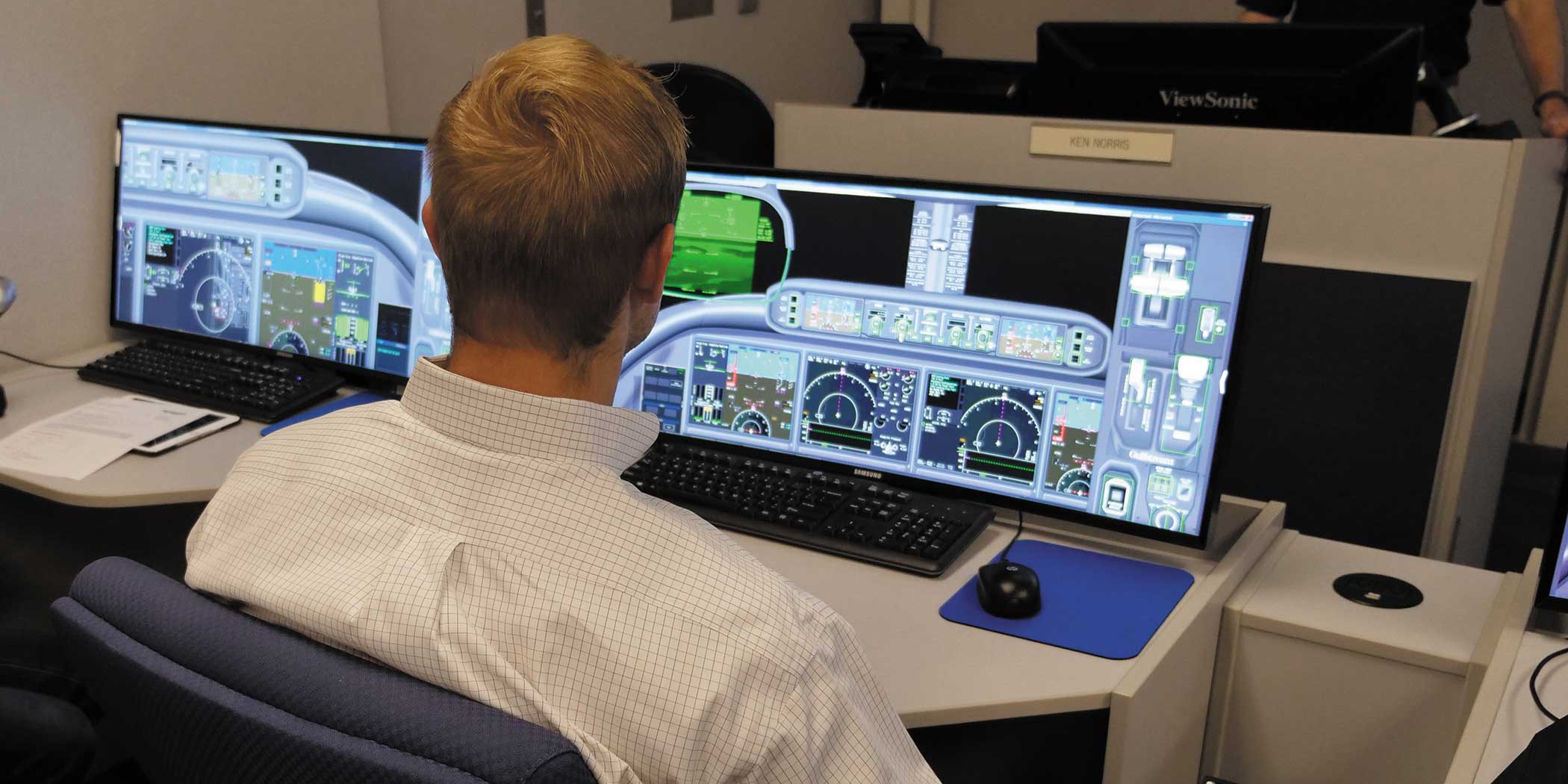Click Here to View This Page on Production Frontend
Click Here to Export Node Content
Click Here to View Printer-Friendly Version (Raw Backend)
Note: front-end display has links to styled print versions.
Content Node ID: 397635
Among government budget planners, “entitlement” can be a dirty word, but to business aviation training providers it is a welcomed concept. Especially when they are selected by an OEM to be the "entitlement provider" for a new aircraft type.
FlightSafety International (Booth F79), one of the two dominant training providers, for example, is the designated entitlement provider for Dassault Aviation Falcon 8X pilot training. That means for the first three years when the 8X is delivered to a new customer, their only option for pilot training is FlightSafety’s program at Paris Le Bourget. After the initial three years, which expires in October, competitors—specifically CAE—can begin offering 8X training. CAE is expected to deploy an 8X full-flight simulator this fall, and FlightSafety might counter with a second device.

Conversely, Montréal-based CAE (Booth J89) will be the entitlement training provider for the new Falcon 6X, planned to enter service in 2022. CAE was selected for the 5X program, which was canceled near the end of 2017 and succeeded by the new 6X twinjet design. CAE was also the Falcon 7X entitlement training provider when that trijet entered service in 2007.
“We try to have a good balance between them, an equal relationship, and not promote one against the other,” said Dassault v-p of operational support Frédéric Leboeuf. When there is eventually competition on an aircraft platform, Leboeuf emphasized that the training offered by both providers should be quite similar, based on the rigorous Falcon Training Policy Manual.
“If an operator pairs a pilot trained by CAE with a pilot trained by FlightSafety,” he said, “they should fly together in full safety.” Dassault and other OEMs regularly audit the training providers—some audits are scheduled, some random. “We do not interfere in their internal process, but we check the process and how they are managing it,” noted Leboeuf. “It’s really a partnership.”
“Gulfstream pilots and maintenance technicians cycle through FlightSafety training year-over-year and provide feedback,” said Gulfstream customer support president Derek Zimmerman. “Our engineering teams also regularly review each system for accuracy and thoroughness by attending the training periodically and conducting desktop reviews of training material. Key pilots involved in the aircraft development are also involved with maintaining the currency and accuracy of the training.”
FlightSafety has been providing training for Gulfstream aircraft for more than 50 years, beginning with the conversion of a generic sim into a Gulfstream I trainer. For the new G500, explained newly announced FlightSafety president and CEO David Davenport, the New York City-headquartered training provider delivered a flight simulator two years before the introduction of the aircraft.

“Additionally, FlightSafety supported the Gulfstream Conceptual Advanced Simulation Environment (CASE) Lab, which is used for human factors evaluations, fly-by-wire control law development and integration of the active control sidesticks (ACS),” Davenport said. The lab is equipped with FlightSafety’s Vital 1100 visual system, real ACSs, touchscreen controllers, and throttle quadrant.
Zimmerman said Gulfstream and FlightSafety partnered on human factors testing for the touchscreens in the new Symmetry Flight Deck, which entered service on the G500 last fall and will be featured on the G600 as well.
CAE’s most extensive OEM relationship has been with Quebec neighbor Bombardier, beginning in the 1990s with the establishment of a training center adjacent to CAE’s headquarters. After CAE acquired Simuflite (launched in 1984 by Singer-Link to challenge the FlightSafety business aviation training monopoly), they expanded the Dallas site with a six-simulator Bombardier wing. Both Bombardier training centers were acquired by CAE last year. CAE also has a joint venture relationship with Embraer for pilot and ground crew training on the Phenom 100 and 300.
“To be a successful OEM authorized training provider [ATP],” said Nick Leontidis, CAE group president of civil aviation training solutions, “it is necessary to fulfill key requirements, including timely delivery of training programs that meet the high standards and expectations of our OEM partners. We typically support and participate in customer conferences, advisory boards, and aircraft sales campaigns.”
CAE also periodically evaluates its simulator instructors, observed by an FAA program manager, and provide their OEM partners with operational metrics measuring “all aspects of the client experience,” Leontidis added.
To address the new FAA requirement for upset prevention and recovery training (UPRT), Davenport said FlightSafety and Gulfstream used an aerodynamic model based upon flight test data. “It accurately models an expanded flight envelope from aerodynamic stall to speeds well beyond Vmo/Mmo [maximum operating limit speed/Mach]. The control forces in the simulator are not simply an extrapolation. They are the same as those experienced by test pilots during type certification of the aircraft.” UPRT simulator scenarios were developed from real-world fatal accidents.
For a time, it appeared that Textron Aviation’s Tru Simulation + Training would provide a third business aviation training market competitor, albeit focused on Textron aircraft. However, last month FlightSafety and Tru formed a JV —FlightSafety Textron Aviation Training —to offer training for Beechcraft, Cessna, and Hawker aircraft types with 89 simulators, mostly contributed by FlightSafety.
If the initial entitlement training provider performs well during their period of exclusivity, they clearly have a built-in customer relationship advantage to continue the relationship with the operator for many years. If the operator is not fully satisfied, either in terms of training quality or cost, then let the competition begin.